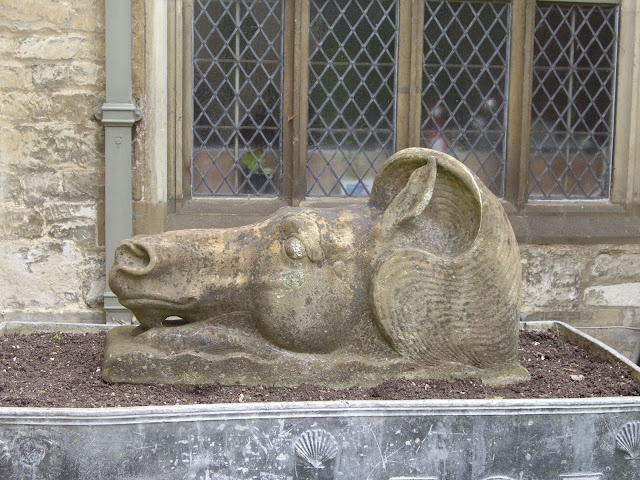I had hoped to write all I wanted about Anglesey Abbey in one post, but I thought it would make it over long.
First some history. Anglesey Abbey, like Swaffham Prior sits of the edge of the fens, in a rather unregarded if not forgotten piece of Cambridgeshire. There was not an abbey at Anglesey, but there was an Augustinian priory, and the house contains some pieces of the conventual buildings in its fabric. More of that anon. Although founded in the later Middle Ages, it does follow an more ancient Anglo-Saxon tradition of monastic settlements in, or on the edge of, the fens in an avowed attempt to emulate the Egyptian Desert Fathers.
There seems a little confusion in the sources with the early history of the Priory: Buildings of England stating it was on the go in 1212, the RCHMS saying it was founded in 1236. You choose. Anyway it must have been a quiet unremarkable place. Nothing seems to have happened there, and it was dissolved in the 1530s. Around 1600 the site was acquired by Thomas Hobson, and the Elizabethan wing constructed from the remains of a medieval building.
And so it continued its uneventful life until it became the residence of Lord Fairhaven between the World Wars. He was immensely rich, single, and spent his time and money filling the house and park with good things - as though the long process of generations of a landed family had to crammed into one hectic lifetime. There is a huge collection of paintings. A lot of these are arranged according to theme: one bedroom has moonlit landscapes, another seascapes, a third room is full of views of Windsor Castle. These themes even influence the choice of object in each room: the seascape room even has a doorstop in the form of a 'Jolly Jack Tar'. He liked religious art too, and had a taste for plants made from semi-precious stone and metal. Of the paintings I was particularly struck by the oil sketches/studies by William Etty (all nudes). Although there are a female nudes on display I was inclined to say that Lord Fairhaven's appreciation was more inclined to the male. As I said before there was a definite Hollywood feel to the house, a lavishness (there are plenty of en suite bathrooms) that belies the smallness and intimacy of most of the house and gives it the air of a schatzkammer. A secret, precious box of a house.
Apologies for the photography. I couldn't use a flash so my camera refused to co-operate! Here is what I managed.
This corridor, and its counterpart below, fill the 'gap' between the medieval wing (L) and the Elizabethan (R).
The Library. Patrician, aloof Neo-Georgian. An almost Baroque surprise after the over-bearing intimacy of the earlier house. A place to breathe.
This is the dining room in the medieval wing of the house. It is thought that this formed the undercroft of the Prior's hall on the floor above. All the stone work looks reworked.
Outside I noticed, and liked, these sculptures:









No comments:
Post a Comment